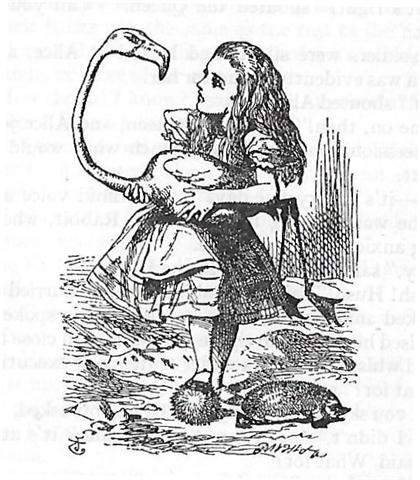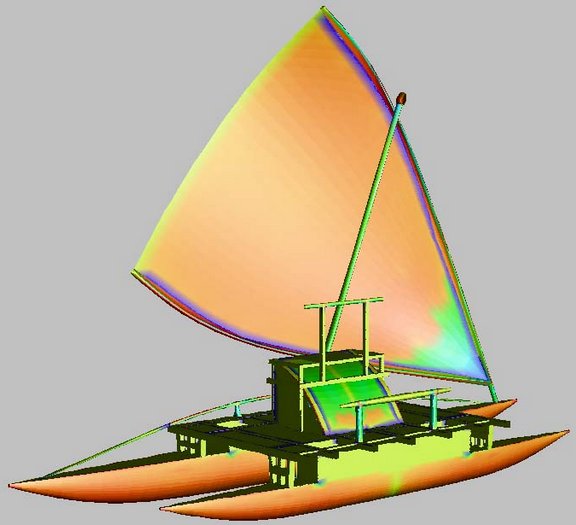391. Until a firm Sun calendar had been globally established the precession of the cardinal points would always have undermined the constructions intended to connect the ruling stars with the seasons down on earth. The 'hedge-hogs' would not stay in their places.
But once the Sun calendar had been separated from the later observed positions of the stars and adopted by all there was stability and peace. There were now Sun dates which all could easily remember and they could be reused from generation to the next. ... Snorri Sterluson explains why 'Frodi's grist' is a kenning for gold. Frodi ruled during a peaceful and productive period, contemporaneous with Augustus's Pax Romana and the birth of Christ; hence the kenning. There were neither thieves nor robbers during this period, 'so that a gold ring lay long on Jalang's heath'. Snorri continues his account with the legend of the mill beyond what is told in the song: The girls' grinding produced an army hostile to Frodi. On the very day of the girls' predictions, the sea-king, Musing (Son of the Mouse), landed o the Danish shore, killed Frodi, and took away Grotti and the women on his ship. The girls were bidden to grind out salt on the mill. At midnight they asked for further instructions. 'Keep grinding', he told them. Then they ground with such vigor that the ship sank. Water poured into the eye of the mill, creating the maelstroem of the sea. Therefore the sea was salt. Incidentally, the mill was given a kenning, Serpent's Couch ...
The Julian calendar was, however, not eternal and the Gregorian came to replace it. Although this once again created chaos because now all the roots had been cut off and no longer was there any obvious way to connect to the vast amount of explanatory myths which everyone once would have understood all across the world. The Day of St John (350 / 2) was replaced by Christmas Eve at the opposite side of the year and the Julian spring equinox (175 - 91) was abandoned for day 80 (= 354 + 91 - 365). ... 84 + 91 = 175 was the day number for June 24 (St John's Day) and ☼214 (Tangaroa Url 25) was 123 (= 214 - 91) days after He Maro 24 (☼91) ...
... Gregory dropped 10 days to bring the calendar back into synchronisation with the seasons. Accordingly, when the new calendar was put in use, the error accumulated in the 13 centuries since the Council of Nicaea was corrected by a deletion of ten days. The Julian calendar day Thursday, 4 October 1582 was followed by the first day of the Gregorian calendar, Friday, 15 October 1582 (the cycle of weekdays was not affected) ... The Gregorian autumn equinox (80 + 185 = 265 = 365 - 100) was 23 days before day 288 (= 2 * 144) - when the Pope had launched his new calendar. On Hawaii this was the measure for the circuit of Lono: ... The correspondence between the winter solstice and the kali'i rite of the Makahiki is arrived at as follows: ideally, the second ceremony of 'breaking the coconut', when the priests assemble at the temple to spot the rising of the Pleiades, coincides with the full moon (Hua tapu) of the twelfth lunar month (Welehu). In the latter eighteenth century, the Pleiades appear at sunset on 18 November. Ten days later (28 November), the Lono effigy sets off on its circuit, which lasts twenty-three days, thus bringing the god back for the climactic battle with the king on 21 December, the solstice (= Hawaiian 16 Makali'i). The correspondence is 'ideal' and only rarely achieved, since it depends on the coincidence of the full moon and the crepuscular rising of the Pleiades ... Friday, 5 October 1582 was changed to be Friday 15 October 1582, i.e. there was a sudden jump ahead and 10 days had mysteriously vanished, causing uproar:
The Pope had evidently decided to eliminate those 10 Julian calendar days which came when the Sun reached Thuban, the ancient star at the pole:
Zuben Elgenubi (α Librae) was a star which came 183 days after Bharani and possibly the henua drawn in Ga6-20 alluded to the beam of Libra. ☼216 (Zuben Elgenubi) - 183 = ☼33 (Bharani), i.e. there were 33 days from 84 (°March 25) to 117 (°April 27). The Hawaiians must have been aware of the similarity between the day when the Pleiades returned to visibility and the day when Bharani rose with the Sun.
At the time of rongorongo Bharani was with the Sun in day 80 + *41 = 121 = May 1. The precession since the time of the Pope had corrected his mistake in not adjusting for the time prior to the Council of Nicaea: ... When the Pope Gregory XIII updated the Julian calendar he did not revise what had gone wrong before 325 AD (when the Council of Nicaea was held). Thus the stars were still 3-4 days 'out of tune' compared to the calendar ... the Gregorian 'canoe' was 'crooked'. His calendar was not in perfect alignment with the ancient star structure. Because he had avoided to adjust with the effects of the precession between the creation of the Julian calendar and the Council of Nicaea in 325 A.D. The Julian equinox was in the 3rd month of the year and in its 25th day (3-25) ...
... Taetagaloa [Not-Tagaroa] goes right over there and steps forward to the stern of the canoe saying - his words are these: 'The canoe is crooked.' (kalo ki ama). Instantly Likāvaka is enraged at the words of the child. Likāvaka says: 'Who the hell are you to come and tell me that the canoe is crooked?' Taetagaloa replies: 'Come and stand over here and see that the canoe is crooked.' Likāvaka goes over and stands right at the place Taetagaloa told him to at the stern of the canoe. Looking forward, Taetagaloa is right, the canoe is crooked. He slices through all the lashings of the canoe to straighten the timbers. He realigns the timbers. First he must again position the supports, then place the timbers correctly in them, but Kuikava the son of Likāvaka goes over and stands upon one support. His father Likāvaka rushes right over and strikes his son Kuikava with his adze. Thus Kuikava dies. Taetagaloa goes over at once and brings the son of Likāvaka, Kuikava, back to life. Then he again aligns the supports correctly and helps Likāvaka in building the canoe. Working working it is finished ...
|
|||||||||||||||||||||||||||||||||||||||||||||||||||||||||||||||||||||||||||||||||||||||||||||||||||||||||||||||||||||||||||||||||||||||||||||
















